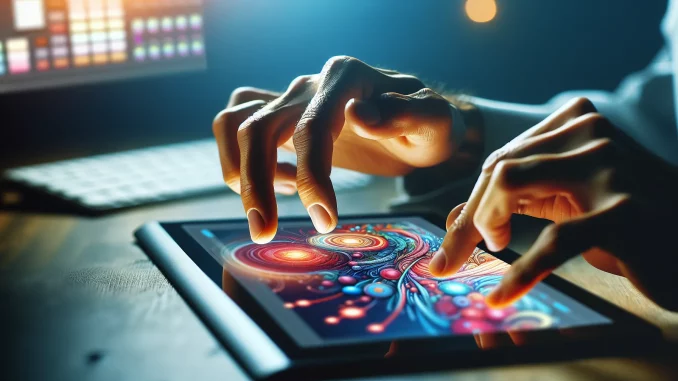
Navigating the complex world of NFT art comes with unique challenges, as revealed by founders and Web3 experts. From combatting copycats that spur blockchain innovation to encouraging innovative ownership models amidst market volatility, here are six insightful reflections on overcoming hurdles and fostering growth in the NFT space.
- Combatting Copycats Spurs Blockchain Innovation
- Accessibility Challenges Inspire User-Friendly Platforms
- Skepticism Leads to Educational Platforms
- Authenticity Concerns Drive Blockchain Certification
- Environmental Issues Propel Green Tech Adoption
- Market Volatility Encourages Innovative Ownership Models
Combatting Copycats Spurs Blockchain Innovation
At the beginning of the NFT bull run, it was, in many ways, a race to see who would mint first. Copycat collections, seeing your art minted by someone else before you could mint it yourself, and NFTs as an industry functioned similarly to the Wild West, which in itself creates many opportunities.
Innovation in blockchain verification, increased safety, and user education played significant roles in how we kept our community safe. When I initially launched the LOTL community, we had a number of copycat collections and had to notify our community regularly to avoid people buying from fake copies.
Since the space has begun to mature, we’re seeing this less and less. I’m excited for this growth to continue so NFTs can protect artists in ways that Web2 infrastructure never could.
Rebecca Kontosic
Web3 Consultant, Founder, Investor and Fundraiser, Dark Capital
Accessibility Challenges Inspire User-Friendly Platforms
The world of NFTs has brought a new revolution to digital art. NFTs promise to bring greater value and uniqueness to digital art by enabling the creation of one-of-a-kind digital assets. The adoption of NFT art has not been without challenges.
One major challenge facing the adoption of NFT art is the issue of accessibility, and how this obstacle has created new opportunities for growth and innovation in the space. Although NFTs have the potential to democratize art ownership by making it accessible to anyone with an internet connection, the process of acquiring and trading NFTs can be complex and intimidating for some. The need for specialized knowledge and technology is one significant obstacle.
This challenge has created exciting opportunities for innovation in the NFT space. Many new platforms and tools have emerged to simplify the process of creating, buying, and trading NFTs. For example, some platforms now offer easy-to-use templates for creating NFT art, making it more accessible for non-artists to participate and create valuable assets.
Another challenge has been that NFT art is often seen as a novelty rather than a serious art form. Digital artists must work twice as hard to justify the value of their NFT art compared to traditional art forms. This can be a daunting challenge, but it also creates opportunities for artists to break new ground. This challenge has also led to the exploration of new concepts of art ownership and provenance.
Artists are now able to create more dynamic and engaging digital art pieces and attach additional elements and perks, making their NFT art pieces more interesting and valuable. This creativity enhances the value of NFTs and elevates the conversation around digital art. The challenge of NFT art adoption has brought new audiences to the art world. NFTs are highly appealing to a younger, more diverse demographic, who see NFTs as an opportunity to participate in the art world in ways that were previously impossible.
This influx of new audiences brings new voices, perspectives, and fresh ideas to the art world, enriching the landscape and broadening the definition of what art is or can be. This challenge has brought new audiences to the art scene, revolutionized concepts of art ownership, and enabled the implementation of new technologies, tools, and platforms that simplify the process of creating, buying, and trading NFTs.
Julie Lamb
Co-Founder and Head of Events, CryptoOracle
Skepticism Leads to Educational Platforms
Navigating through the NFT art world has been a fun ride, though not without its fair share of headaches. One of the most prominent challenges has been an initial reluctance and hesitation among traditional art fanatics and institutions. Persuading them to enter the digital realm and understand that ownership can occur through non-fungible tokens proved an unusual obstacle.
But every challenge is a dormant opportunity ready to be unlocked. In response to the resistance, the NFT community has been forced into ingenious and new ways of creating space for discussions between tradition and vanguard. It has become a catalyst in forming platforms and experiences that inform and teach people, while attracting them to the colorful realm of ownership by digitization.
This challenge has also led to debates on the nature of art and ownership, opening up new horizons for creativity in order to transform the field. In doing so, we reimagine what it is to hold and value art in the 21st century.
In brief, skepticism as an obstacle has turned into a launchpad for development and creativity in the NFT art field. It is a chance to escape from the usual and create a new era where technology, art, and ownership come together in order to determine what will become of art as we build upon its legacy.
Manish Shrestha
Founder, BiheBazaar Pvt Ltd
Authenticity Concerns Drive Blockchain Certification
The challenge of verifying the authenticity and provenance of NFT art has created new growth opportunities. Implementing blockchain-based certification systems, smart contracts for transparent ownership transfers, and decentralized platforms for authentication can establish trust. This fosters credibility, attracts more artists and collectors, and spurs innovation in the digital art market.
Yoana Wong
Co-Founder, Secret Florists
Environmental Issues Propel Green Tech Adoption
The challenge of environmental concerns associated with blockchain energy consumption has paved the way for innovation in green technology within the NFT art space. This obstacle has created new opportunities for growth and sustainability by driving the development of eco-friendly blockchain solutions.
For example, artists and platforms have started exploring proof-of-stake (PoS) blockchains with lower energy consumption or NFT marketplaces that offset carbon emissions. By addressing these concerns, the industry attracts environmentally conscious collectors, investors, and artists, fostering a more sustainable and socially responsible NFT art market.
Ben Lau
Founder, Featured SEO Company
Market Volatility Encourages Innovative Ownership Models
The challenge of market volatility and speculation in the adoption of NFT art has sparked the development of innovative ownership models. Fractional ownership, royalty rights, and revenue-sharing models have emerged as mechanisms to address concerns related to stability and long-term value.
For example, fractional ownership allows multiple parties to invest in a single NFT, spreading the risks and democratizing access to high-value artworks. Royalty rights enable artists to receive a percentage of future resales, providing ongoing income. Revenue-sharing models allow collectors to earn from the commercial usage of NFTs. These innovative models not only mitigate volatility concerns but also enhance the attractiveness and potential returns of NFT art, thereby fostering growth and innovation in the space.
Roy Lau
Co-Founder, 28 Mortgage

